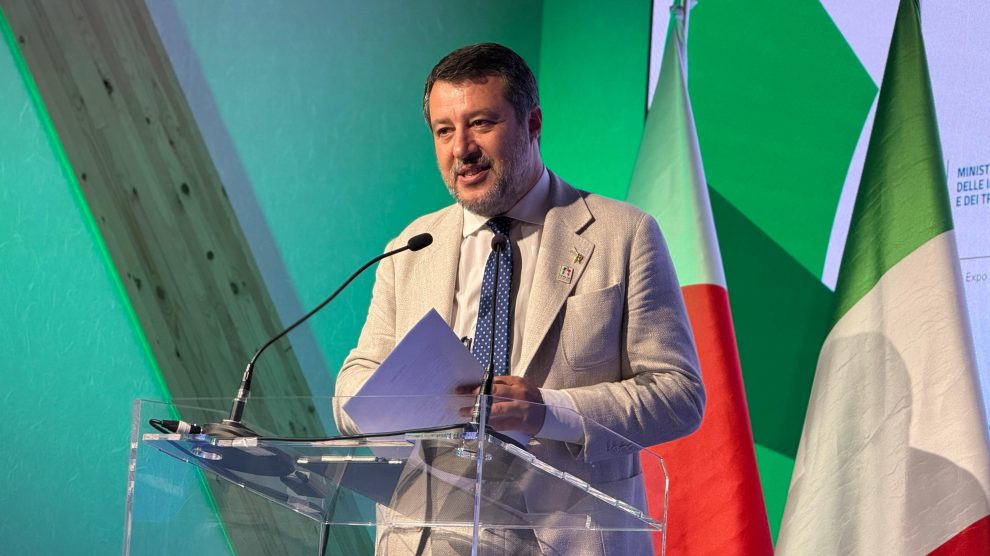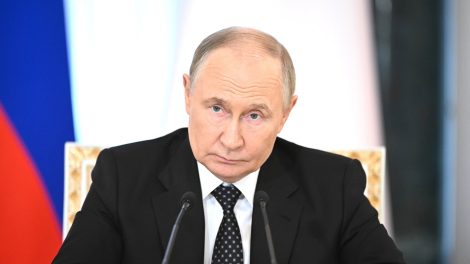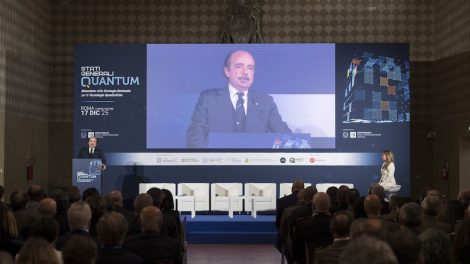Salvini on the road. On Wednesday, Italian Deputy Prime Minister and Transport Minister Matteo Salvini visited the Akashi Strait Bridge and signed an infrastructure cooperation memorandum during his mission to Japan.
- This move sets the stage for a new element in the strategic partnership between Rome and Tokyo.
- This passage symbolically connects the planned bridge over the Strait of Messina with Italy’s broader ambition to serve as a diplomatic and industrial bridge between the West and the Indo-Pacific.
Decoding the news. Strengthening ties with Italy offers Tokyo a concrete opportunity for strategic diversification in an increasingly unstable global environment.
- For Rome, growing industrial and geopolitical convergence with Japan opens a path to carve out an autonomous role at the heart of the Indo-Pacific.
The context. Salvini visited the Akashi bridge — seen as a “twin” to the future Messina bridge — and met with top executives from Toyota and Honda.
- Both companies are considering expanding their investments in Italy, contingent on EU flexibility toward hybrid technologies and biofuels as alternatives to full electrification.
- Salvini criticised the European Green Deal and highlighted the strategic relevance of “smart roads” — dual-use infrastructure essential for digital transition and national security.
- These roads align with NATO’s concept of “resilience through civilian infrastructure,” which Tokyo also shares.
Italy’s playbook. In 2023, Italy upgraded its relationship with Japan to a strategic partnership, launching structured cooperation on defence, technology, and industry.
- The Global Combat Air Programme (GCAP) — a sixth-generation stealth fighter to be developed jointly by Italy, Japan, and the UK — is the industrial-military pillar of this alliance.
- As Italy is also pushing its Mattei Plan for Africa, integrating it with EU initiatives like Global Gateway and the G7’s PGII, Japan is increasingly interested in African dynamics and sees Italy as a potential vector to access that arena.
- Italy’s other Deputy Prime Minister, Foreign Minister Antonio Tajani, visited earlier this spring and reinforced economic ties.
- Prime Minister Giorgia Meloni has also announced an upcoming Indo-Pacific diplomatic tour, which may include a stop in Tokyo.
The Washington rift. All happens while US President Donald Trump has announced tariffs of up to 25% on Japanese cars and steel — effective August 1 — hitting a core sector of Japan’s export economy.
- Tokyo is also under pressure to raise its defence spending to 5% of GDP, but has resisted, scrapping the planned “2+2” talks with the US and the Prime Minister’s participation in June’s NATO summit.
- Against this backdrop, Prime Minister Shigeru Ishiba is looking to Europe — particularly Italy — to help balance Japan’s strategic dependence on the United States.
What we’re watching. With the July 20 elections looming and Ishiba’s coalition under political pressure, Japan is searching for reliable International partners.
- Through the vote to renew the Sangiin, the High Chamber of the National Diet, the future of his government will be decided.
- Italy, with its industrial capacity and Euro-Mediterranean positioning, can become a valuable asset for Tokyo’s future.
- As Washington pushes Tokyo toward unilateral choices on trade and defence, Italy offers a pragmatic, alternative channel to strengthen Japan’s strategic autonomy and industrial resilience.





